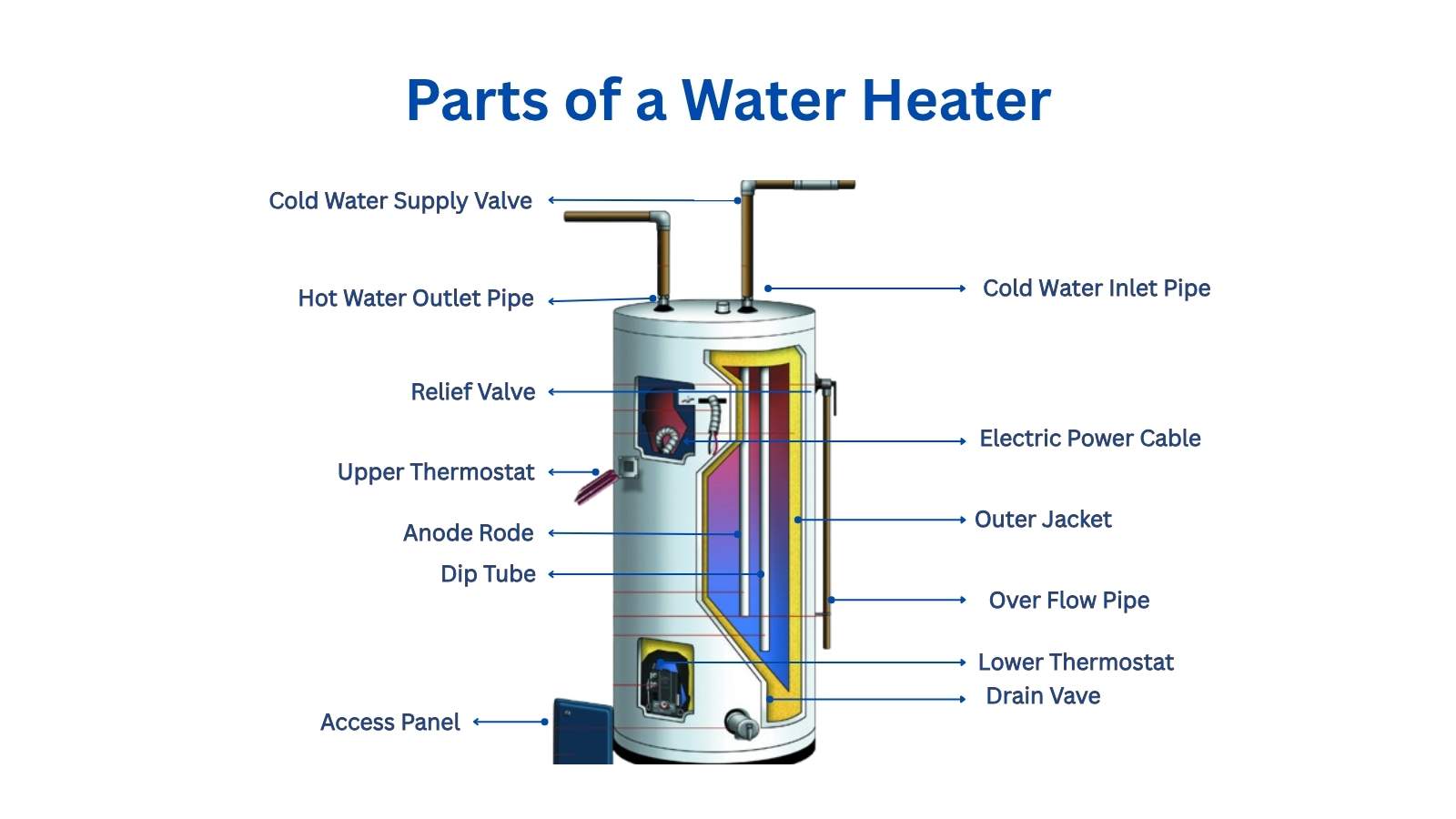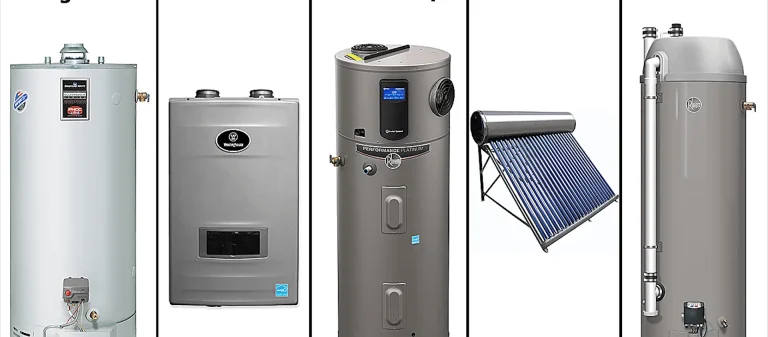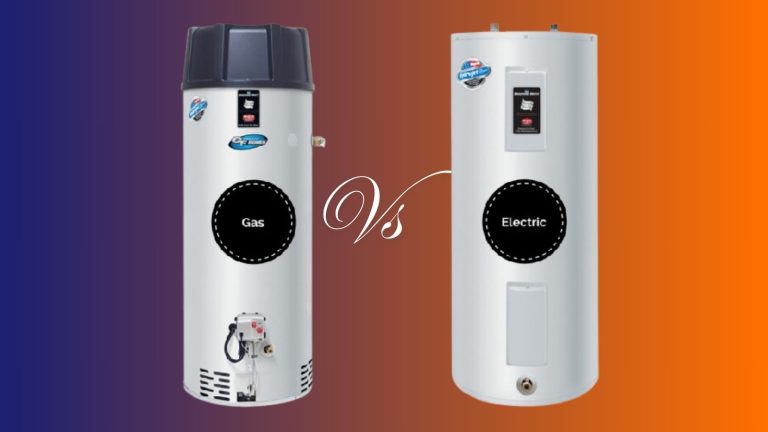Water Heater Parts: Everything You Need to Know

Water heater Parts and Water Heater can be crucial appliances in our homes. They provide essential hot water for daily use, especially those that are powered by natural gas, such as the power vent models of water heaters. When it is time to clean dishes while showering or doing dishes using a heat pump, these water heaters can improve the living experience through a constant flow of hot water towards the bottom. Like all appliances, they rely on a range of internal components, like their cold water source, to function effectively. Knowing the elements in the tank is vital to identifying issues, carrying out maintenance, or determining whether it’s appropriate to replace the parts, including the heating pipe and vent pipe elements.
This guide will take you through the many elements that comprise water heaters. They will also discuss their function in determining wear, as well as suggestions for maintaining this gas heater. Suppose you’re a homeowner who wants to maintain the water heater’s top state or is just interested in its operation. In that case, This comprehensive guide is ideal for you.
2. Types of Water Heaters and Their Core Parts
Water heaters come in various models, each with specific components used to perform particular functions, like outlets for hot and cold water as well as cold water intake. Here’s how:
Tank and. tankless water heaters
- Tank Heating Equipment They are the traditional versions that use heated water in tanks, a kind of water heater that most households depend upon. They are more efficient at standby energy losses but more affordable in the early stages.
- Tankless water heaters: These are more efficient than the traditional gas heaters for water. Also known as heaters on demand They can be described as water heaters which heat only when they are required. They are more efficient when it comes to energy usage however, they do require an initially capital investments.
Electrical vs. Natural Gas Hot Water Heaters
- Electrical Water Heating Equipment Make use of heating elements that are powered with electricity in order to warm water.
- Gaz Water heaters: Use a burner that is powered by natural gas or propane to quickly warm water.
The components of these heaters differ according to the type and model that we’ll look at in the following section.
3. Main Parts of a Traditional Tank Water Heater
An ordinary tank-type water heater is made up of a variety of key components that are in sync to give continuous hot water.
3.1. Tank (Storage Cylinder)
A storage tank is the place to place the heated liquid. It is mainly made of steel and is covered with other materials or glass to prevent rust from occurring. Tanks are covered with insulation to minimize heat loss and increase the effectiveness of energy. This is essential for an atmospheric water heater, as well as its distinctive parts, such as the top part of the tank.
3.2. Heating Element (Electric Water Heater Models)
The heating components in water heaters made of electricity help to heat the water and ensure that the cold water at the bottom is effectively heated. These elements are submerged within the tank and direct heat the water.
3.3. Burner Assembly (Gas Water Heater Models)
Gas-powered heaters have an assembly of burners underneath the tank. The component uses gasoline (natural gas or propane) to create the flame that heats the water inside the tank, which is the water heater.
3.4. Thermostat
This thermostat controls the the temperature of water. It’s also security feature to make sure that the water doesn’t become too warm. It’s usually adjusted and easily accessible in accordance with user preferences for the best water flow control.
3.5. Anode Rod
Sacrificial rod can help to prevent the corrosion of the tank by attracting harmful substances in the water, thus ensuring the long-term durability of these unique components. In time, the anode rod wears down and needs to be replaced to protect the tank and ensure optimal performance of common designs of the water heaters. Ensures that the water in the tank is clear.
3.6. Dip Tube
Dip tube directs cold water to at the base of the tank maximizing the flow of hot water for maximum efficacy. This will increase efficiency by keeping hot water on top and ready to use.
3.7. Drain Valve
This valve can be situated on the bottom of the tank. The drain valve allows users to get rid of sediment accumulation that can impact the performance of the tank when not regularly cleaned.
3.8. Pressure Relief Valve (TPR Valve)
As a vital safety component, it is a vital safety element that is, the TPR valve lets water out when the pressure or temperature in the tank exceeds safe limits.
3.9. Insulation
Tanks are lined with a layer of insulation that keeps the temperature of the tank. It lowers energy consumption by making sure that the temperature of water stays steady for longer durations of time. It is crucial to the efficiency of natural gas water heaters.
4. Key Components of Tankless Water Heaters
Tankless water heaters eliminate storage tanks and instead utilize special components that provide instant hot water. This improves the effectiveness of heating water sources.
4.1. Heat Exchanger
The heat exchanger is the main element that warms water as it passes through, using either gas or electric coils.
4.2. Flow Sensor
The sensor is able to monitor water flow, and switches off heating systems only when essential to make use of water.
4.3. Electronic Control Board
Tankless systems use control boards to manage the operations, including setting temperatures and detecting errors, which ensures the efficient heating of water down to the lowest level.
4.4. Gas Burner or Heating Coils
Heating coils that are powered by electricity or gas can rapidly raise the temperature of water.
4.5. Ventilation System
For models that run on gas venting systems, they are safe since they remove the gasses from the home particularly in water heaters with power vents.
5. Signs of a Failing Water Heater Part
Being aware of warning signs of failure in components of your water heater that is gas could aid in identifying issues prior to them becoming serious
- Unusual sounds: Rumbling or popping sounds can indicate that there is sediment in the environment.
- Inconsistent temperature of water: Fluctuations suggest problems with the thermostat or heating element.
- Leaks in water and rusty water could be signs of issues related to the anode rod or other elements of the water heater. Often due to corrosion of the tank or a failing anode rod inside the water heater that is hot.
- It smells like hot water. This indicates the development of a bacterium in the tank.
- The energy-intensive cost: Reduced efficiency caused by defective components may improve energy efficiency.
6. When and How to Replace Parts of a Water Heater
DIY Vs. Professional Repair
Although specific tasks, like replacing an anode rod or cleaning the water heater of sediment drain, are able to be completed with a DIYer, it’s preferential to leave more complex repairs to professionals who know the tanks for gas-powered water heaters.
Recommended Replacement Intervals
- Anode rod every 3 or 5 years to ensure the durability that your heater gas is running.
- Heating or gas burner element: In the case of an issue, it’s an indication that something is going wrong with your hot-water heater, and could be problems with the primary components of the water heater.
- The valve for the TPR Check it annually and replace it if it’s in a leak.
Cost Overview of Common Parts
The heating component as well as the anode rod used for heating the hot water tank are moderately priced, and can cost around $20 to $50 which makes them water heater components that are affordable. In contrast the thermostats and electronic parts that are used for water heaters made of gas could be between $50-$200 depending on the kind of thermostat that can alter the temperature of the water in the tank.
7. Maintenance Tips to Extend the Life of Parts
Maintaining your home’s condition is crucial to prevent frequent repairs
- Clear the tank daily: This prevents the accumulation of sediment and improves the tank’s effectiveness, which is vital to maintaining the quality of the gallons of water that is heated.
- Analyze the rod: Change it out if it shows indications of wear.
- Insulate the Pipes and Tank The proper insulation will aid in maintaining your water’s temperature in the tank. Insulation minimizes the loss of heat, and also helps to conserve energy, especially when it comes to gas water heaters.
- Yearly Calendar Inspections Expert review to confirm that all components, such as the cold water outlet as well as the hot water outlet, are functioning correctly.
8. Where to Buy Quality Water Heater Parts
Online Vs. Local Stores
Platforms online typically provide an the largest selection of components of hot water heaters including complete compatibility information. Local stores give the advantage of immediate availability and personalized assistance.
Recommended Brands
Select reliable brands like AO Smith, Rheem, or Bradford White for durability and efficiency in heat pump water heaters.
Warranty and Compatibility Tips
Always check the warranty to ensure quality and choose components that work with the gas water heater model.
10. 10. Quick View for Water Heater Parts
Understanding the various components in a tank will ensure that your appliance is functioning efficiently and can resolve any issues quickly. The thermostat to the tank, together and the tank for expansion, ensures that every part is essential to giving consistent hot water. Regular maintenance and prompt replacement of components will extend the lifespan of your heater. This can save you money in the long run, particularly in the case of the anode rod that is powered.
Take the time today to check your tank or water heater and flush it, or contact a professional to make sure everything is in good working order. An effort now can help you avoid larger issues in the future.


